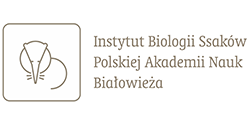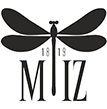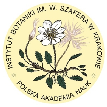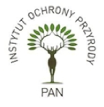- Wyszukaj w całym Repozytorium
- Piśmiennictwo i mapy
- Archeologia
- Baza Młynów
- Nauki przyrodnicze
Wyszukiwanie zaawansowane
Wyszukiwanie zaawansowane
Wyszukiwanie zaawansowane
Wyszukiwanie zaawansowane
Wyszukiwanie zaawansowane

Obiekt
Tytuł: Questions of inequality and collective experience. Hinduism from several inner perspectives
Inny tytuł:
Archaeologia Polona Vol. 44 (2006)
Wydawca:
Institute of Archaeology and Ethnology Polish Academy of Sciences
Miejsce wydania:
Opis:
Typ obiektu:
Abstrakt:
This paper examines the nature of social inequality taking examples from traditional Hinduism still functioning in rural Western India. Comparative research enables us to show the distinct inner divisions of society and different ways of expressing these divisions. Focus on three traditional groups from India — Rajputs, camel shepherds (Rabaris) and Untouchable Dalits (Meghwals), each holding a specific position in society, sheds more light not only on the idosyncracies of their culture, but also on how a specific notion categorizing Hindu values, first creates firm boundaries in society, and then imprints itself on all subgroups, and finally expresses them culturally in myths, symbols, rituals, etc. Doing analysis of these cultures, we discover not only what makes all of them Hindu, but also what makes them distinct. We can also observe the different ways in which each subgroup reacts to social divisions, taking them for granted, crossing them, or being forbidden any transgression. This paper emphasizes the advantage of doing ethnological fieldwork; work on several levels, including interviews and personal contact with a living culture, offers extensive data from various sources, enabling a cultural analysis on a deeper level
Bibliografia:
Aleaz, K.P. 2004. Some features of a Dalit theology. Asia Journal of Theology 18 (1): 146—67
Briggs, G.W. 1920. The Chamars. Calcutta
Census of India. 1991. Internet: http://www.censusindia.net/scst.html
Deliege, R. 1993. The myths of origin of the Indian Untouchables. Man (N.S.) 28 (3): 533-49
Demski, D. 2007. Obrazy hinduizmu. Kultura i religia oczami radżputów i pasterzy. Warszawa (forth-coming)
Flueckiger, J.B. 1989. Cast e and regional variants in an oral epic tradition. In Oral epics in India, S.H. Blackburn, P.J. Claus, J.B. Flueckiger and S.S. Wadley (eds), 33-54. Berkeley-Los Angeles -London
Ghose, S. 2003. The Dalit in India, Social Research, 70 (1): 83-109
Khan, D.-S. 1997. Conversions and shifting identities: Ramdev Pir and the Ismailis in Rajasthan. Delhi
Khan, D.-S. 1999. Sacrifice, martyrdom and Samadhi in the religious traditions of the Meghwals of Rajasthan. In Religion, ritual and royalty, N.K. Singh and R. Joshi (eds), 140-52. Jaipur-New Delhi
Mahalingam, R. 2003. Essentialism, culture e and power: representations of social class. Journal of Social Issues 59 (4): 733-49
Manusmfti. Kamäsütra. Manu Swajambhuwa— Manusmryti, czyli traktat o zacności. Watsjajana Malla-naga. Kamasutra, czyli traktat o miłowaniu, 1985, trans. K.M. Byrski. Warszawa
Mencher, P. 1974. The caste system upside-down or the not-so Mysterious East. Current Anthropology 15 (4): 469-94
Mookherjee, M. 2003. Exclusion, internalization, harm. Towards a case-based alternative to Walzer's thin minimalism. Ethnicities 3 (3): 345-68
People of Gujarat..., 2003. People of India, vol. 22, Gujarat, part 1-3, K.S. Singh, (ed.), R.B. Lal, P.B.S.V. Padmanabham, G. Krishnan and A. Mohidden (eds of the vol.). Mumbai
Rapport N., 2002. The narrative as fieldwork technique: practical ethnography for a world in motion. In Ethnographic fieldwork in the contemporary world, V. Amit (ed.), 71-95. London-New York
Tilly, Ch. 2001a. Introduction. Anthropology confronts inequality. Anthropological Theory 1 (3): 299-306
Tilly, Ch. 2001b. Relational origins of inequality. Anthropological Theory 1 (3): 355-71
Czasopismo/Seria/cykl:
Tom:
Strona pocz.:
Strona końc.:
Szczegółowy typ zasobu:
Format:
Identyfikator zasobu:
Źródło:
IAiE PAN, sygn. P 357 ; IAiE PAN, sygn. P 358 ; IAiE PAN, sygn. P 356 ; kliknij tutaj, żeby przejść
Język:
Prawa:
Prawa zastrzeżone - dostęp nieograniczony
Zasady wykorzystania:
Digitalizacja:
Instytut Archeologii i Etnologii Polskiej Akademii Nauk
Lokalizacja oryginału:
Biblioteka Instytutu Archeologii i Etnologii PAN
Dostęp:
Kolekcje, do których przypisany jest obiekt:
- Repozytorium Cyfrowe Instytutów Naukowych > Kolekcje Partnerów > Instytut Archeologii i Etnologii PAN > Publikacje Pracowników i Wydawnictwa IAE PAN
- Repozytorium Cyfrowe Instytutów Naukowych > Kolekcje Partnerów > Instytut Archeologii i Etnologii PAN > Publikacje Pracowników i Wydawnictwa IAE PAN > Czasopisma bieżące
- Repozytorium Cyfrowe Instytutów Naukowych > Piśmiennictwo > Czasopisma/Artykuły
- Repozytorium Cyfrowe Instytutów Naukowych > Kolekcje Partnerów > Instytut Archeologii i Etnologii PAN > Publikacje Pracowników i Wydawnictwa IAE PAN > Czasopisma bieżące > Archaeologia Polona
Data ostatniej modyfikacji:
3 mar 2023
Wszystkie dostępne wersje tego obiektu:
https://rcin.org.pl./publication/77329
Wyświetl opis w formacie RDF:
Wyświetl opis w formacie RDFa:
| Nazwa wydania | Data |
|---|

 INSTYTUT ARCHEOLOGII I ETNOLOGII POLSKIEJ AKADEMII NAUK
INSTYTUT ARCHEOLOGII I ETNOLOGII POLSKIEJ AKADEMII NAUK
 INSTYTUT BADAŃ LITERACKICH POLSKIEJ AKADEMII NAUK
INSTYTUT BADAŃ LITERACKICH POLSKIEJ AKADEMII NAUK
 INSTYTUT BADAWCZY LEŚNICTWA
INSTYTUT BADAWCZY LEŚNICTWA
 INSTYTUT BIOLOGII DOŚWIADCZALNEJ IM. MARCELEGO NENCKIEGO POLSKIEJ AKADEMII NAUK
INSTYTUT BIOLOGII DOŚWIADCZALNEJ IM. MARCELEGO NENCKIEGO POLSKIEJ AKADEMII NAUK
 INSTYTUT BIOLOGII SSAKÓW POLSKIEJ AKADEMII NAUK
INSTYTUT BIOLOGII SSAKÓW POLSKIEJ AKADEMII NAUK
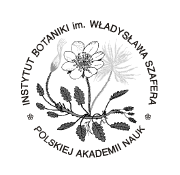 INSTYTUT CHEMII FIZYCZNEJ PAN
INSTYTUT CHEMII FIZYCZNEJ PAN
 INSTYTUT CHEMII ORGANICZNEJ PAN
INSTYTUT CHEMII ORGANICZNEJ PAN
 INSTYTUT FILOZOFII I SOCJOLOGII PAN
INSTYTUT FILOZOFII I SOCJOLOGII PAN
 INSTYTUT GEOGRAFII I PRZESTRZENNEGO ZAGOSPODAROWANIA PAN
INSTYTUT GEOGRAFII I PRZESTRZENNEGO ZAGOSPODAROWANIA PAN
 INSTYTUT HISTORII im. TADEUSZA MANTEUFFLA POLSKIEJ AKADEMII NAUK
INSTYTUT HISTORII im. TADEUSZA MANTEUFFLA POLSKIEJ AKADEMII NAUK
 INSTYTUT JĘZYKA POLSKIEGO POLSKIEJ AKADEMII NAUK
INSTYTUT JĘZYKA POLSKIEGO POLSKIEJ AKADEMII NAUK
 INSTYTUT MATEMATYCZNY PAN
INSTYTUT MATEMATYCZNY PAN
 INSTYTUT MEDYCYNY DOŚWIADCZALNEJ I KLINICZNEJ IM.MIROSŁAWA MOSSAKOWSKIEGO POLSKIEJ AKADEMII NAUK
INSTYTUT MEDYCYNY DOŚWIADCZALNEJ I KLINICZNEJ IM.MIROSŁAWA MOSSAKOWSKIEGO POLSKIEJ AKADEMII NAUK
 INSTYTUT PODSTAWOWYCH PROBLEMÓW TECHNIKI PAN
INSTYTUT PODSTAWOWYCH PROBLEMÓW TECHNIKI PAN
 INSTYTUT SLAWISTYKI PAN
INSTYTUT SLAWISTYKI PAN
 SIEĆ BADAWCZA ŁUKASIEWICZ - INSTYTUT TECHNOLOGII MATERIAŁÓW ELEKTRONICZNYCH
SIEĆ BADAWCZA ŁUKASIEWICZ - INSTYTUT TECHNOLOGII MATERIAŁÓW ELEKTRONICZNYCH
 MUZEUM I INSTYTUT ZOOLOGII POLSKIEJ AKADEMII NAUK
MUZEUM I INSTYTUT ZOOLOGII POLSKIEJ AKADEMII NAUK
 INSTYTUT BADAŃ SYSTEMOWYCH PAN
INSTYTUT BADAŃ SYSTEMOWYCH PAN
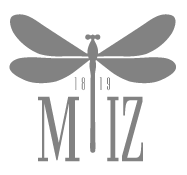 INSTYTUT BOTANIKI IM. WŁADYSŁAWA SZAFERA POLSKIEJ AKADEMII NAUK
INSTYTUT BOTANIKI IM. WŁADYSŁAWA SZAFERA POLSKIEJ AKADEMII NAUK











